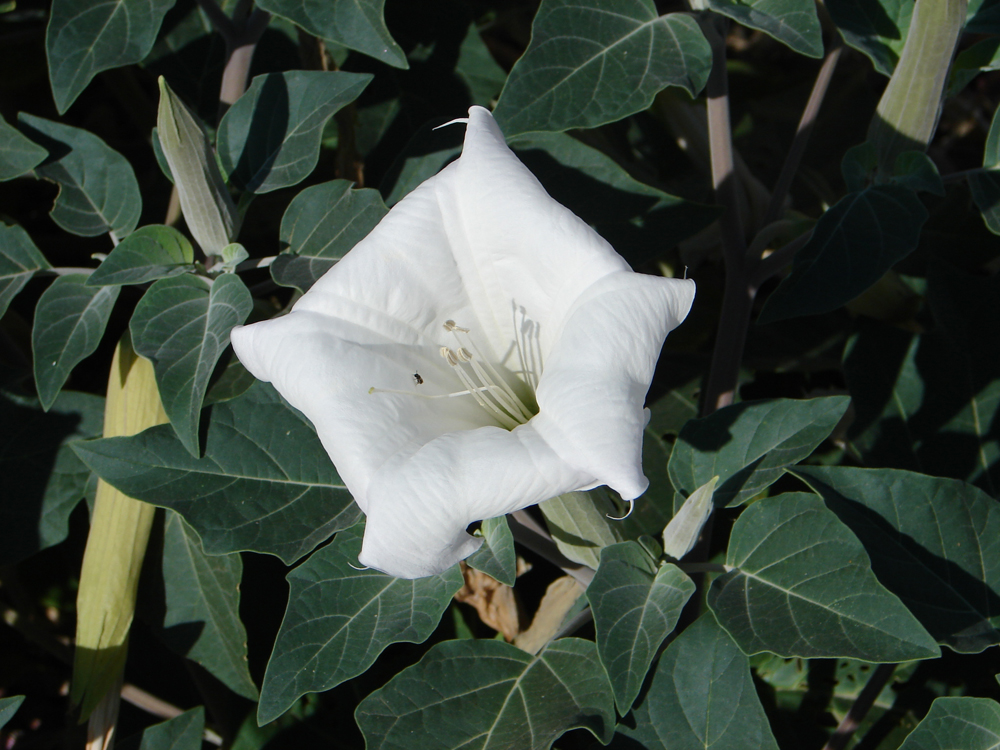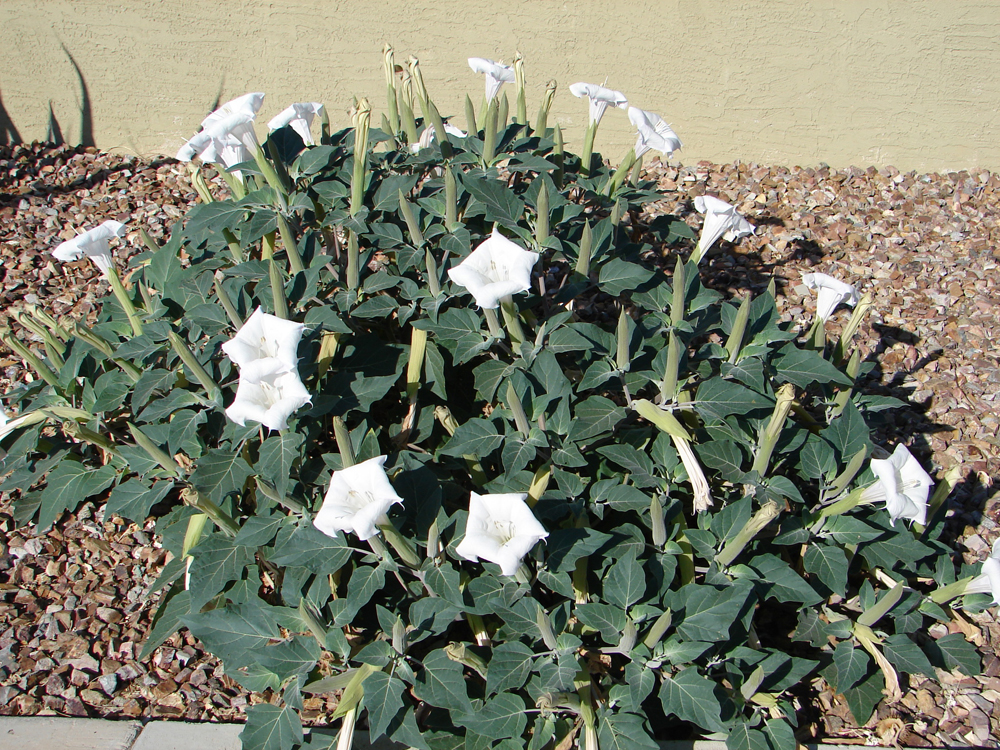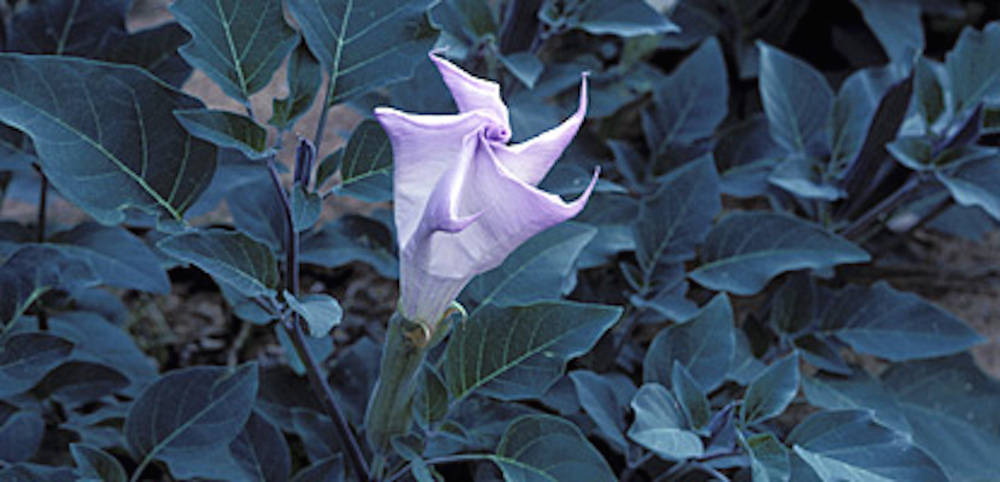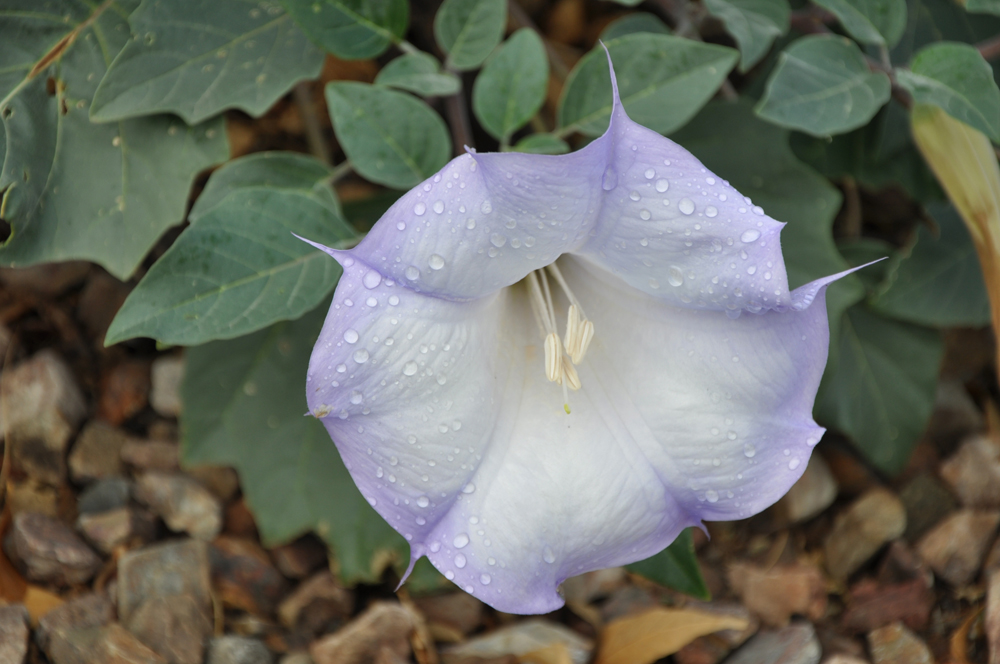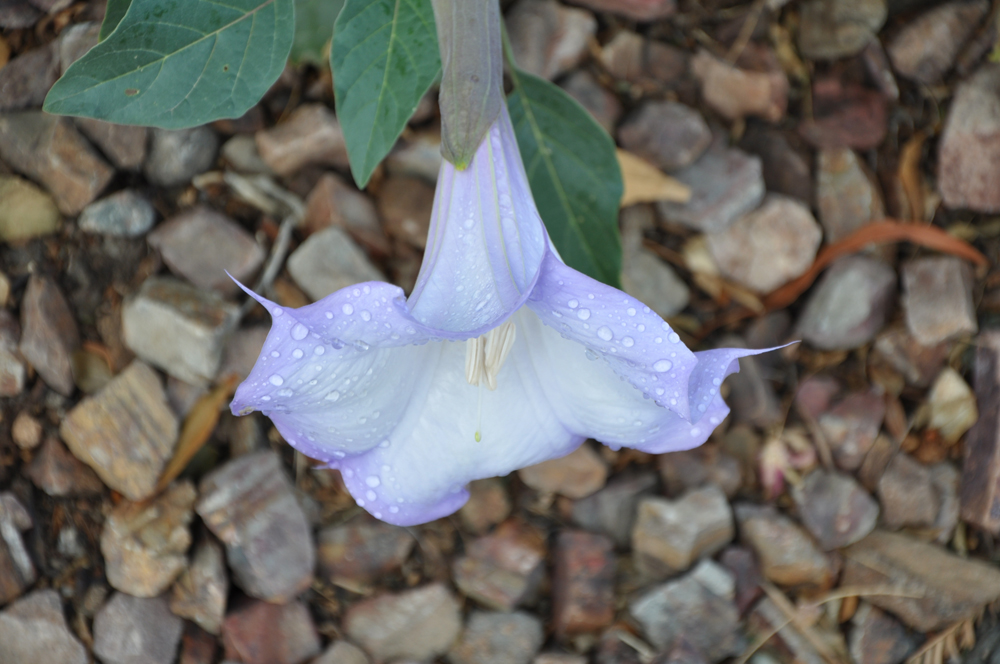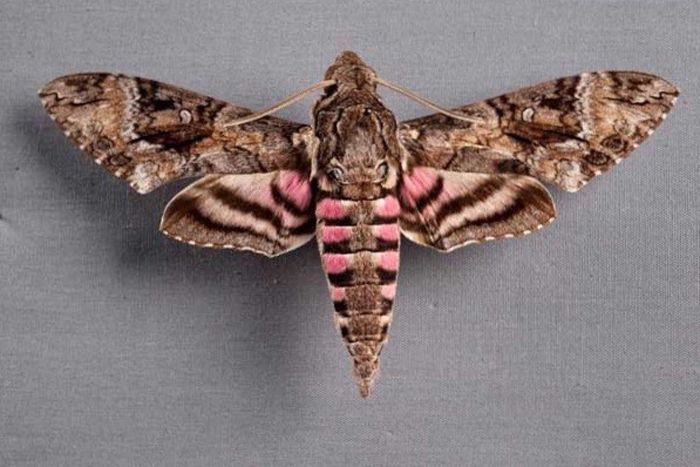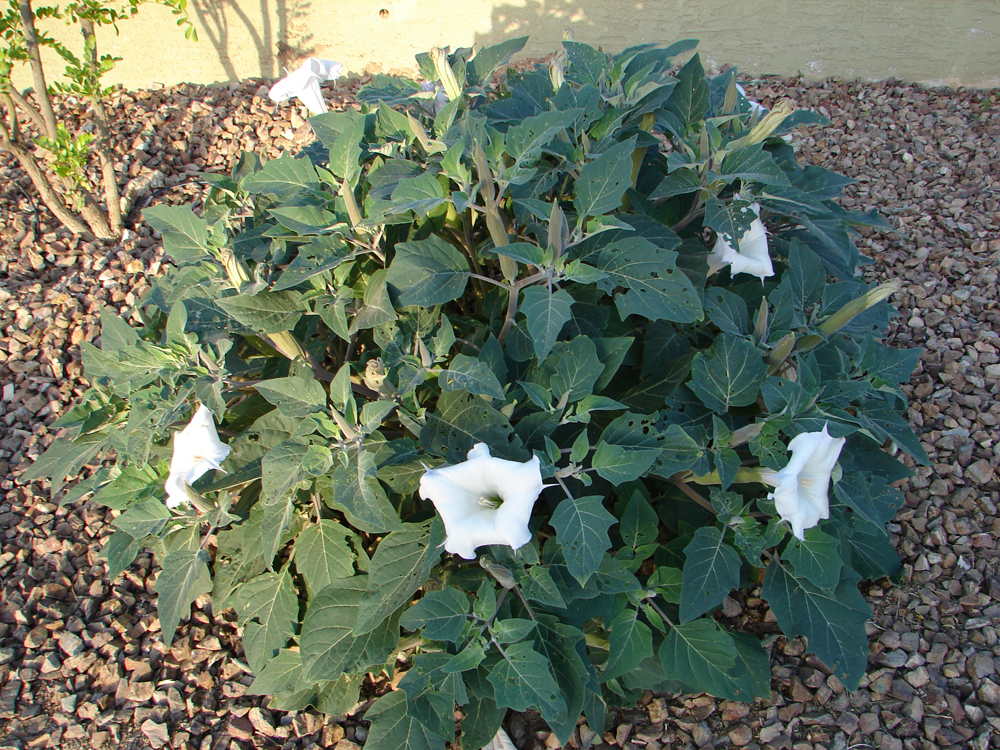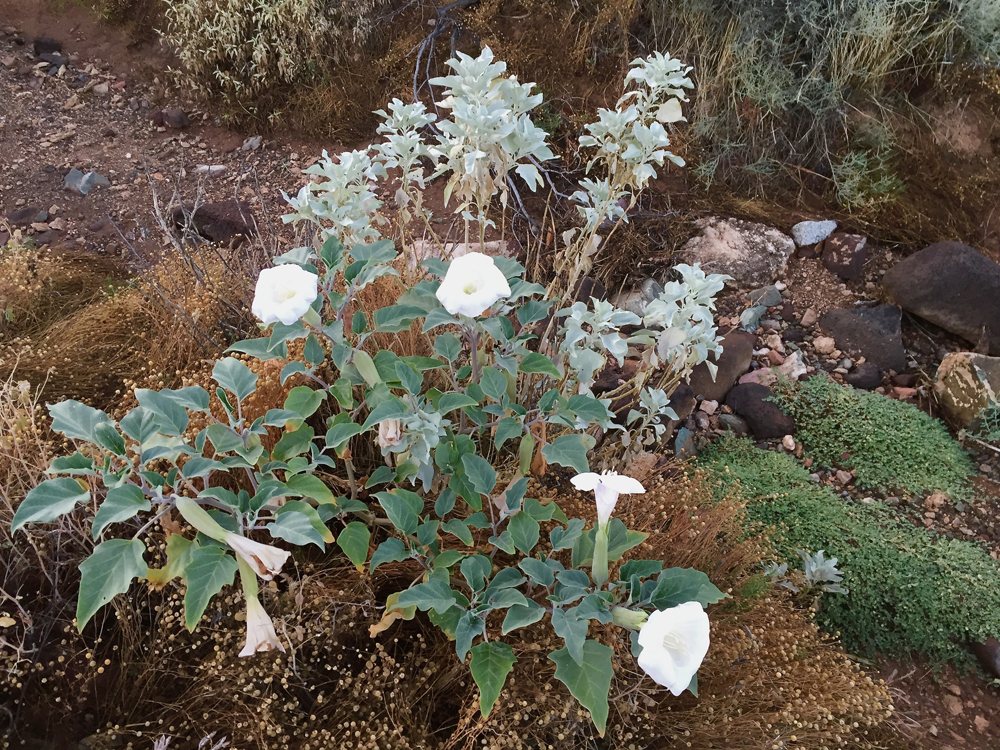Sacred Datura: Photos of a Beautiful (But Poisonous) Plant
Sacred Datura (Datura wrightii) is a night-blooming herbaceous perennial that is common in the arid regions of the United States, Baja and northern Mexico.
Important and dangerous
It is a member of the family Solanaceae (the Nightshade Family) that contains species of great agricultural importance (tomatoes, eggplants and potatoes) as well as species that are extremely poisonous. (Credit: Linda & Dr. Dick Buscher)
Widespread flora
The Datura genus actually contains nine different species whose range extends throughout the temperate and tropical regions of the world. The word "datura" is derived from the Hindu word "dhatura" which means "thorn apple." (Credit: Linda & Dr. Dick Buscher)
Dangerous beauty
Toxic hallucinogens are found in most parts of a datura plant and can cause delirious behavior and even death in foraging animals, as well as humans. (Credit: Linda & Dr. Dick Buscher)
Get the world’s most fascinating discoveries delivered straight to your inbox.
Many names
Sacred Datura is commonly found anywhere from sea level up to an elevation up to 7,000 feet (2,130 meters) along the arroyos, washes and sandy flats of these arid lands. Other common names for this most unique plant are moon flowers, thorn apple, moon lily, moon flower, Indian apple, angel's trumpet, devil's trumpet, tolguacha, locoweed and Jimson weed. (Credit: Linda & Dr. Dick Buscher)
Strong roots
Sacred Datura can grow 2 to 3 feet (0.6 to 0.9 m) high and can reach 6 to 8 feet (1.8 to 2.4 m) across. It has a large, fleshy taproot. The leaves have smooth margins and are alternately arranged on strong, stout stems. The leaves' color is a deep medium green on top and with a gray-green underside. The leaves have an unpleasant odor. (Credit: NPS)
Fantastic hues
During the growing season, a Sacred Datura plant produces dozens of large, fragrant trumpet-shaped flowers. Most often the flowers are a rich white in color with occasional light lavender hues highlighting the margins. (Credit: Linda & Dr. Dick Buscher)
Night owls
Flowers of Sacred Datura are 6 to 8 inches (15 to 20 centimeters) in diameter and have five slender teeth on their edge. They open in the early evening and close by noon of the following day. (Credit: Linda & Dr. Dick Buscher)
Doing the work
Since this is a night-blooming plant, its flowers must be pollinated by nocturnal visitors. Various species of sphinx and hawk moths are common pollinators. During the early morning hours, species of bees and even hummingbirds aid in the life-sustaining process. (Credit: NPS)
Spreading the love
The seedpods that result from fertilization are globe-shaped and very spiny. When ripe, they split open and release semicircular, flattened, yellow-brown seeds. (Credit: Linda & Dr. Dick Buscher)
Significant to many
Sacred Datura is used by some Native American cultures in religious ceremonies. Medicine men, holy men, spiritualists and even self-proclaimed witches have used it since ancient times. Accidental ingestion by animals or humans seldom occurs, because all parts of the plant are extremely bitter. (Credit: Linda & Dr. Dick Buscher)
Beauty and bitterness
The dichotomy between the beautiful trumpet flowers of Sacred Datura and its poisonous, alkaloid parts makes this a gift of nature that can be enjoyed for its floral beauty, while always cautiously respecting its potential danger. (Credit: Linda & Dr. Dick Buscher)
Follow Live Science @livescience, Facebook & Google+.



